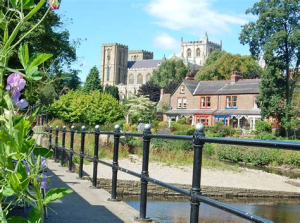
If you’re looking for a quintessentially English day out then you’d do well to consider the wonderful market towns available across the country. A market town is a small, rural town that has the legal right to hold a weekly market. Famous market towns include Halifax in West Yorkshire, Yeovil in Somerset, and Dorchester in Dorset. Ripon in Yorkshire is another popular market town. Find out more about Things to do in Ripon at a site like www.localthingstodo.co.uk/locations/things-to-do-in-ripon/
Many market towns are surrounded by farms or harbours. These rural settings lend themselves to a leisurely day exploring the history of the town, perusing quirky shops, and admiring the countryside. Herefordshire is the king of beef markets, while Shropshire and Somerset are home to cider apple country. Hereford, England’s oldest market town, dates back to 1189. Although it’s a cathedral city, Hereford remains a bustling market town today.
If you are looking for an easy day out, check out Beccles, Suffolk. This market town has plenty of things to see and do and its Friday market offers an ideal opportunity to enjoy the local countryside. For outdoor activities, you can take the Angles Way, a long-distance walking route that follows the riverbank. If you’re a beer lover, try a brew from one of the pubs located in the area.
A market town’s distinctive character has its origins in medieval times. Market towns are usually characterised by a large, wide main street, as in Burford and Thame, in Oxfordshire. Some market towns have unusual shapes – triangular, at the intersection of three roads. A rectangular market square, on the other hand, is typical in some places. If you love history, you should try to visit a market town.
Market fairs were often held outside the town walls. In the Middle Ages, market towns were often located near river fords and crossroads for logistical purposes. The reign of Henry III saw a dramatic rise in the number of established market fairs.
In medieval England, there was one market town per 20,000-161,000 acres. There were two types of market towns: old towns, where trade was open and general, and new towns, which concentrated on one particular product. Manchester, for example, focused on cloth. Tudor towns had populations between 500 and 5,000, and they were usually home to several market stalls. There were also baskets full of traditional produce and wares.








